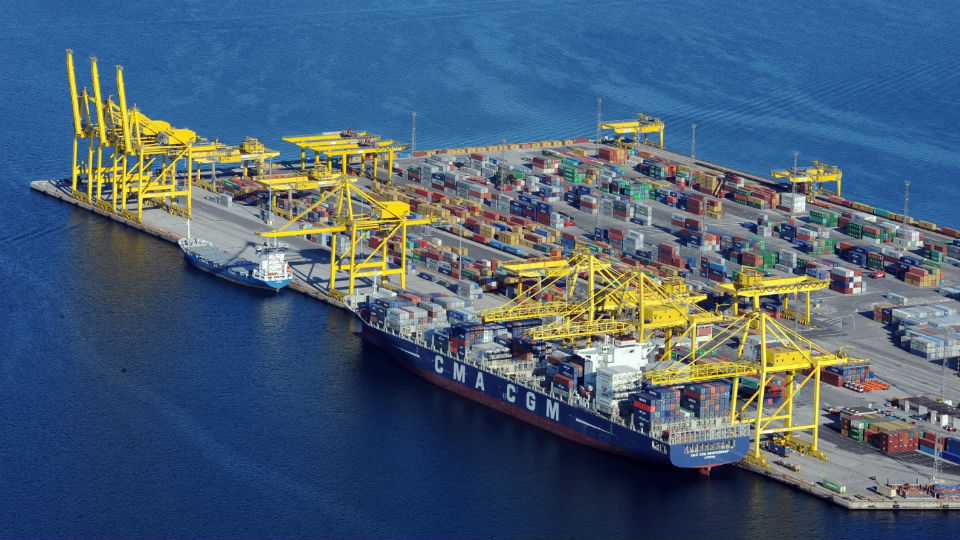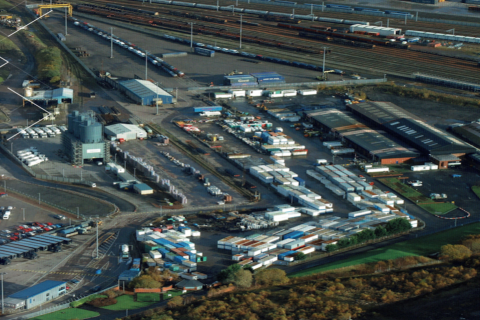New Hungarian terminal at Baltic-Adriatic crossroads

In the west of Hungary, a new terminal is under construction that should facilitate traffic between the Baltic Sea in the north and the Adriatic Sea in the south. The terminal of Zalaegerszeg is strategically placed on two rail freight corridors (RFC’s) and taps into the Eurasian rail freight volumes entering Europe via Poland. “This new yard is really placed at crossroads”, explains György Firbás.
A senior European logistician from Hungary, Firbás will present the Hungarian development plans at the RailFreight Summit in Gdansk, taking place on 15 and 16 May. What is Zalaegerszeg? Why there? And how could this become a junction on the route between the Baltic and Adriatic sea?
Closest terminal to Koper
“Hungary has been investigating various sites for terminal development. There are two new terminals to be built: one in Debrecen in the east and one in Zalaegerszeg in the west. Hungary realises the importance of its location and the potential of intermodality”, he said.
Zalaegerszeg Yard will be situated on the main corridor crossing Hungary from the northeast to the southwest. It will be the closest Hungarian terminal to Trieste, Koper and further to Northern Italy. “The Adriatic sea handles some 69 per cent of Hungarian sea container traffic. A direct connection is planned to Trieste, Rijeka, Koper and further to Verona/Milano, but also towards Vienna to connect to the North Sea and mainland Germany.”
Limited infrastructure
Hungary still has a lot of work to do before it can reap the benefits of its geographic location. The current infrastructure is limited to the wider area of Budapest, and the facilities are not up to date. The connection on two international lines are to reshuffle the cards, Firbás argues.
“The terminal may also be connected to the Budapest-Belgrade line, which will form an extension to the Greek ports of Piraeus and Thessaloniki. Moreover, it links to eastern Poland, where we will connect to the traditional route through Belarus and Russia. We are focussing on the flow of traffic moving from the south-east to the north-west, and from the south-west to the north-east.”
Why Zalaegerszeg?
An entirely new green field investment is to be made in Zalaegerszeg. Initially, the budget has been set at 41 million Euros. The terminal will include an intermodal yard with two 650-metre rail sidings, a container depot, truck parking, offices and warehouse areas.
“It is to form a regional logistics hub, exactly on the RFC to the Adriatic Sea”, commented Firbás. T”rains enter Hungary either at Rusovce /Rajka in the northwest, or at Cana/Hidasnemeti in the northeast. They exit Hungary at Oriszentpeter/Hodos in the west towards the Adriatic Sea. This line leads exclusively through Zalaegerszeg.
2022-2023
The feasibility study has been completed and currently the project awaits decisions about the financing. “We hope that the first trains roll into the new yard some time around 2022-2023”, said Firbás.
This year’s RailFreight Summit is the second edition of the event. Top-level speakers will gather in the intermodal hub to discuss New Silk Road connections and other routes through Poland and Central Europe. Registration is still open. More information about the event can be found on the website.
Also read:
Hungary gears up to become EU gateway New Silk Road
–
You just read one of our premium articles free of charge
Want full access? Take advantage of our exclusive offer





